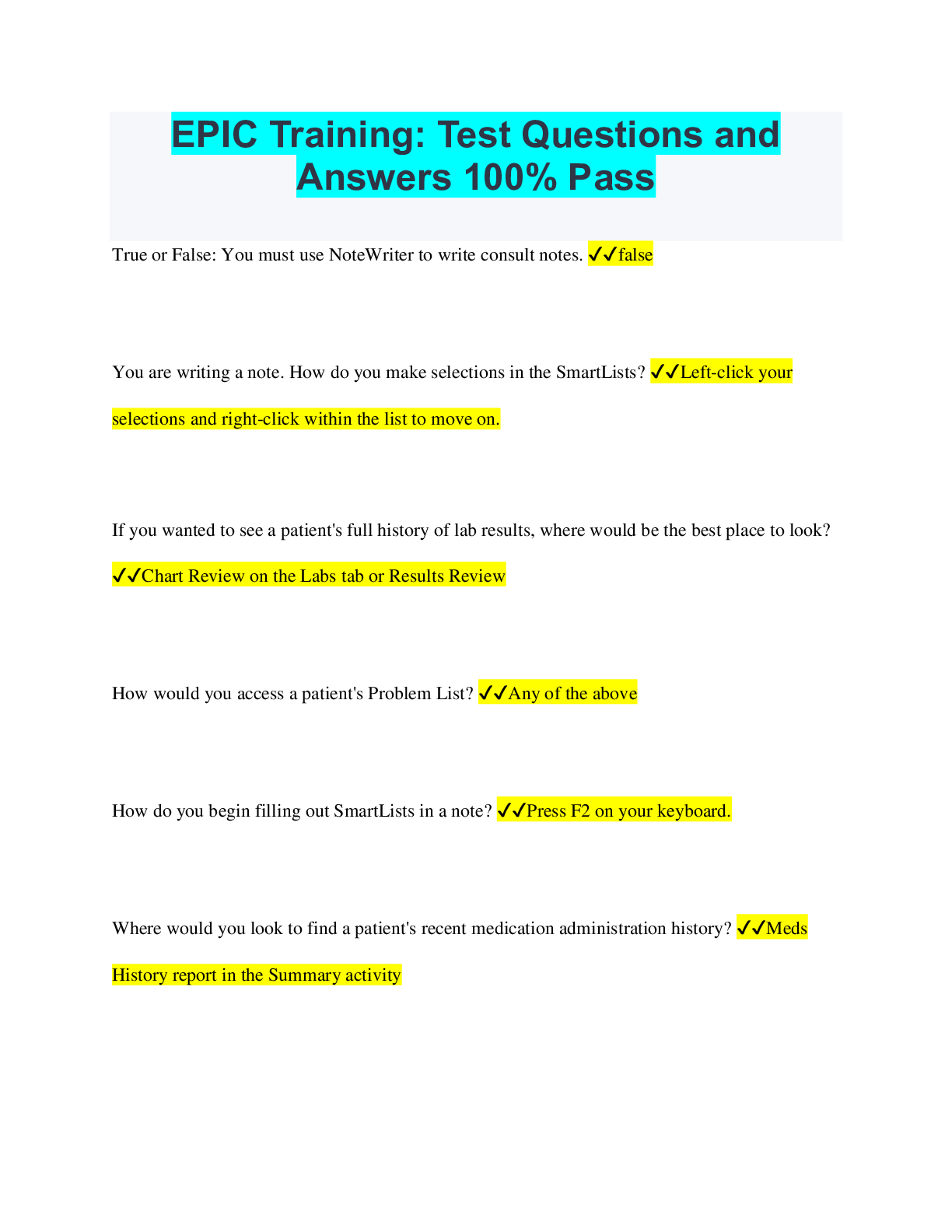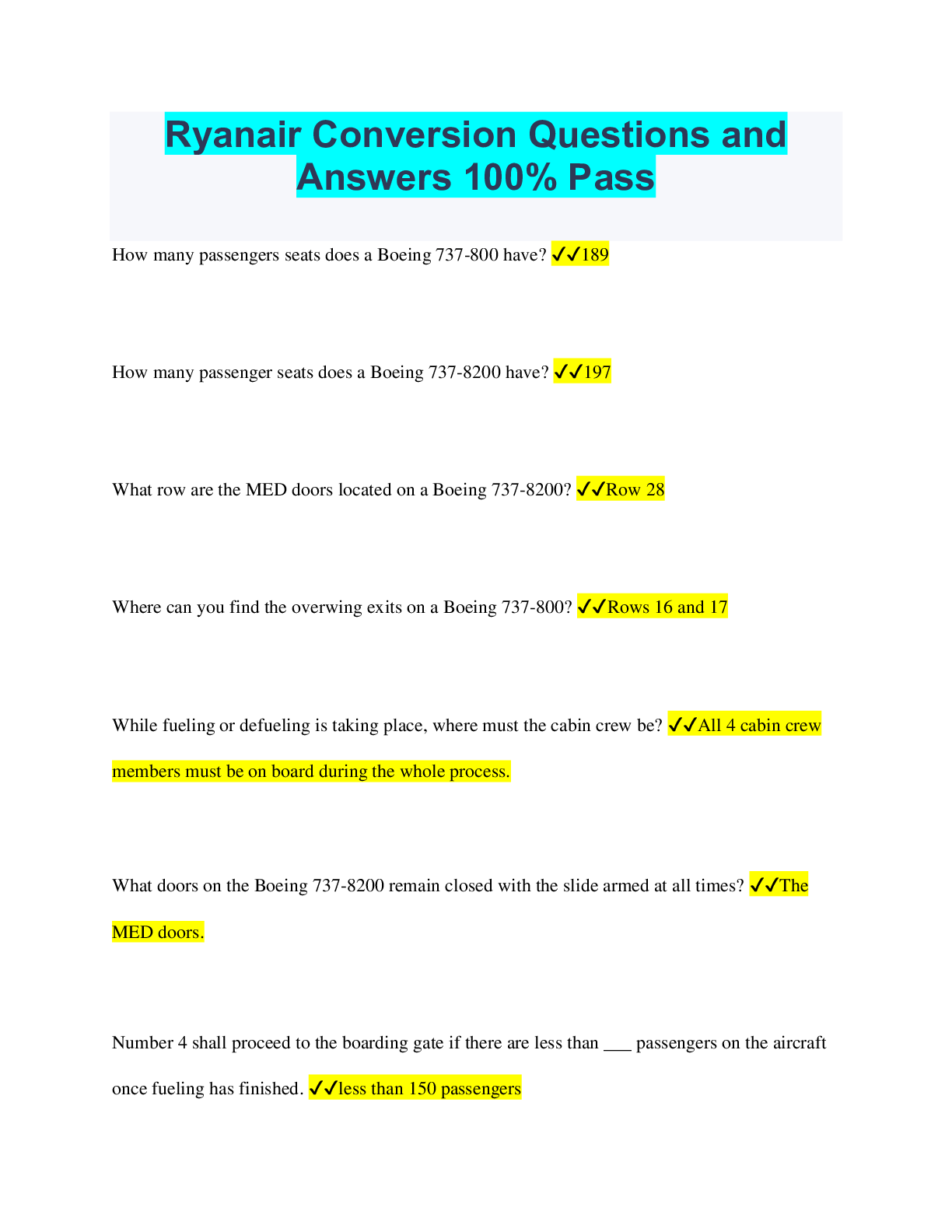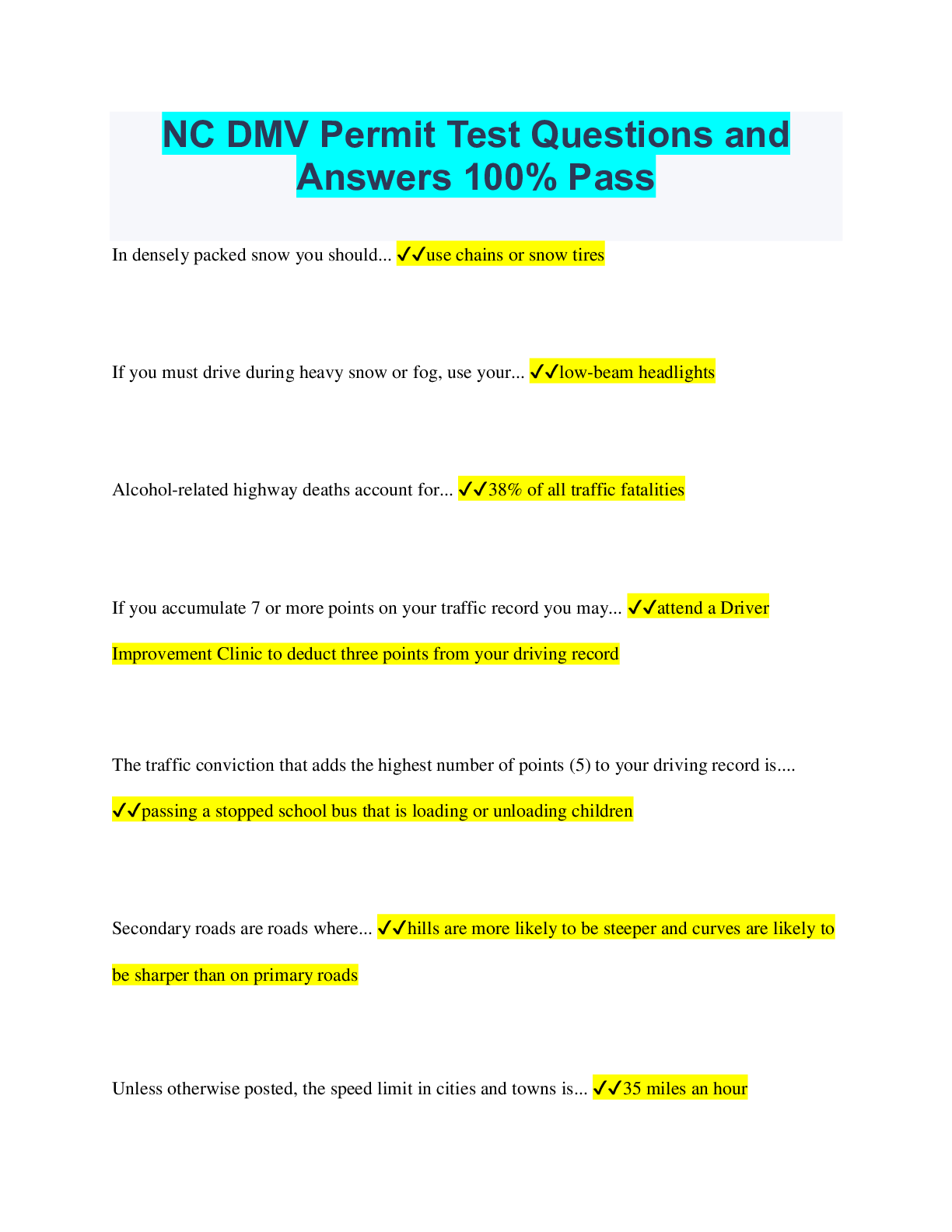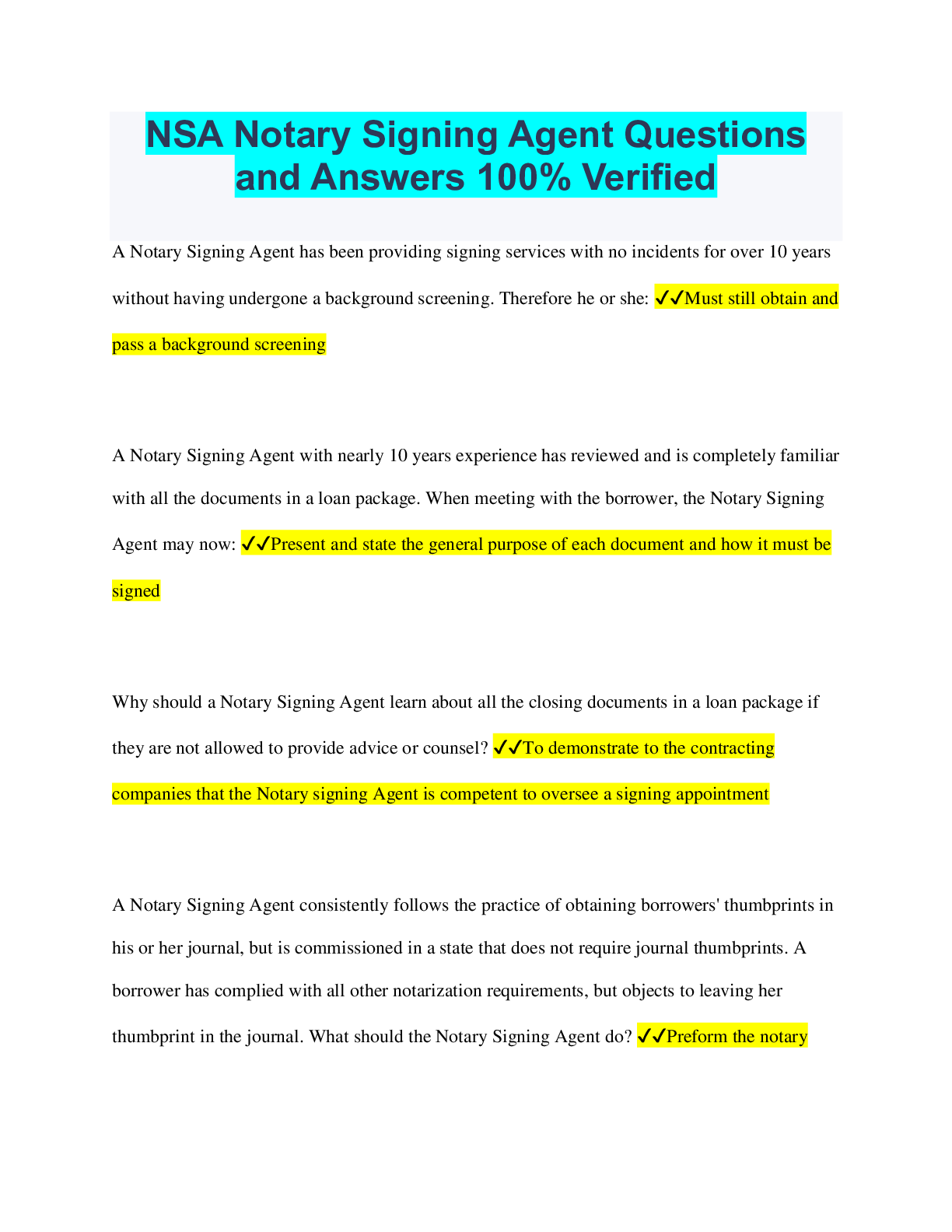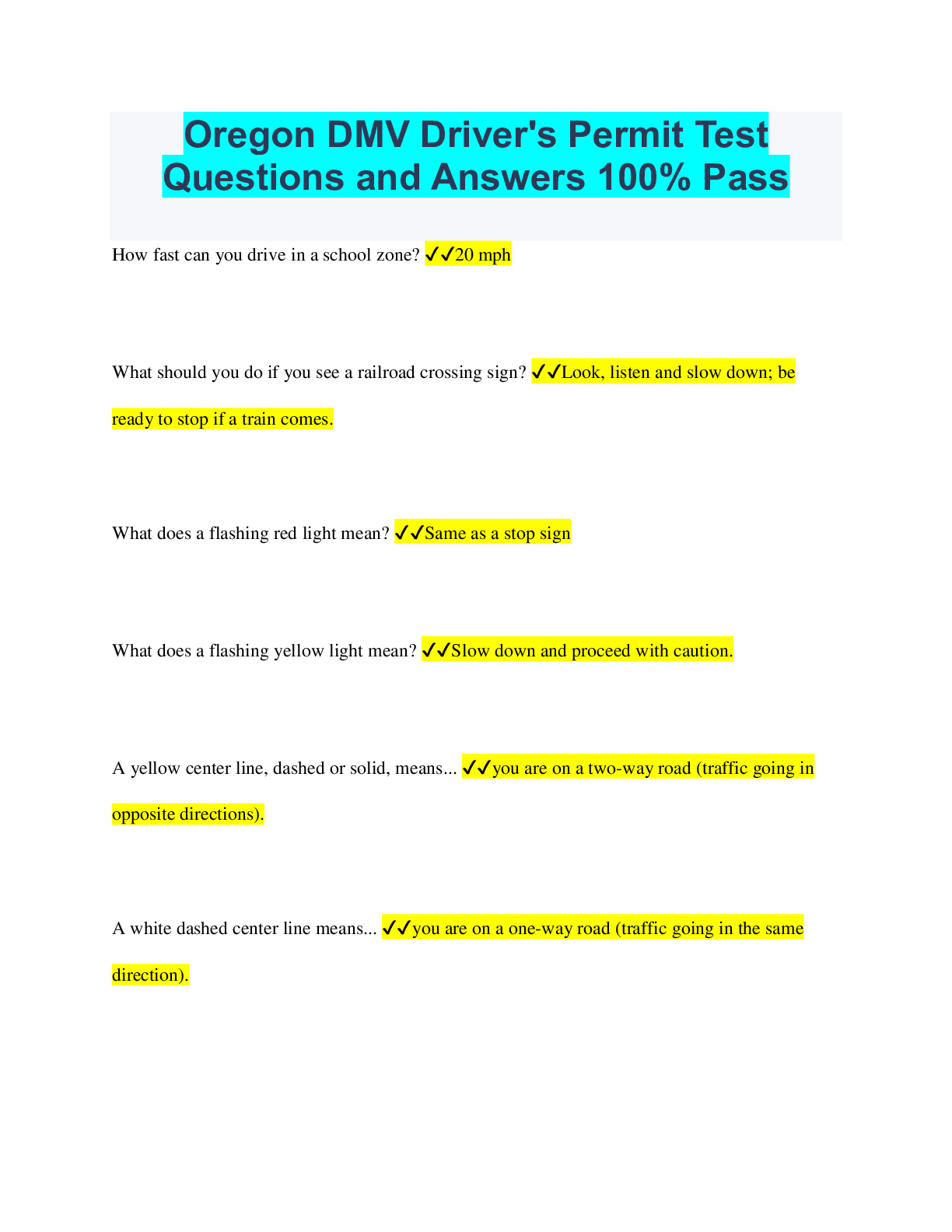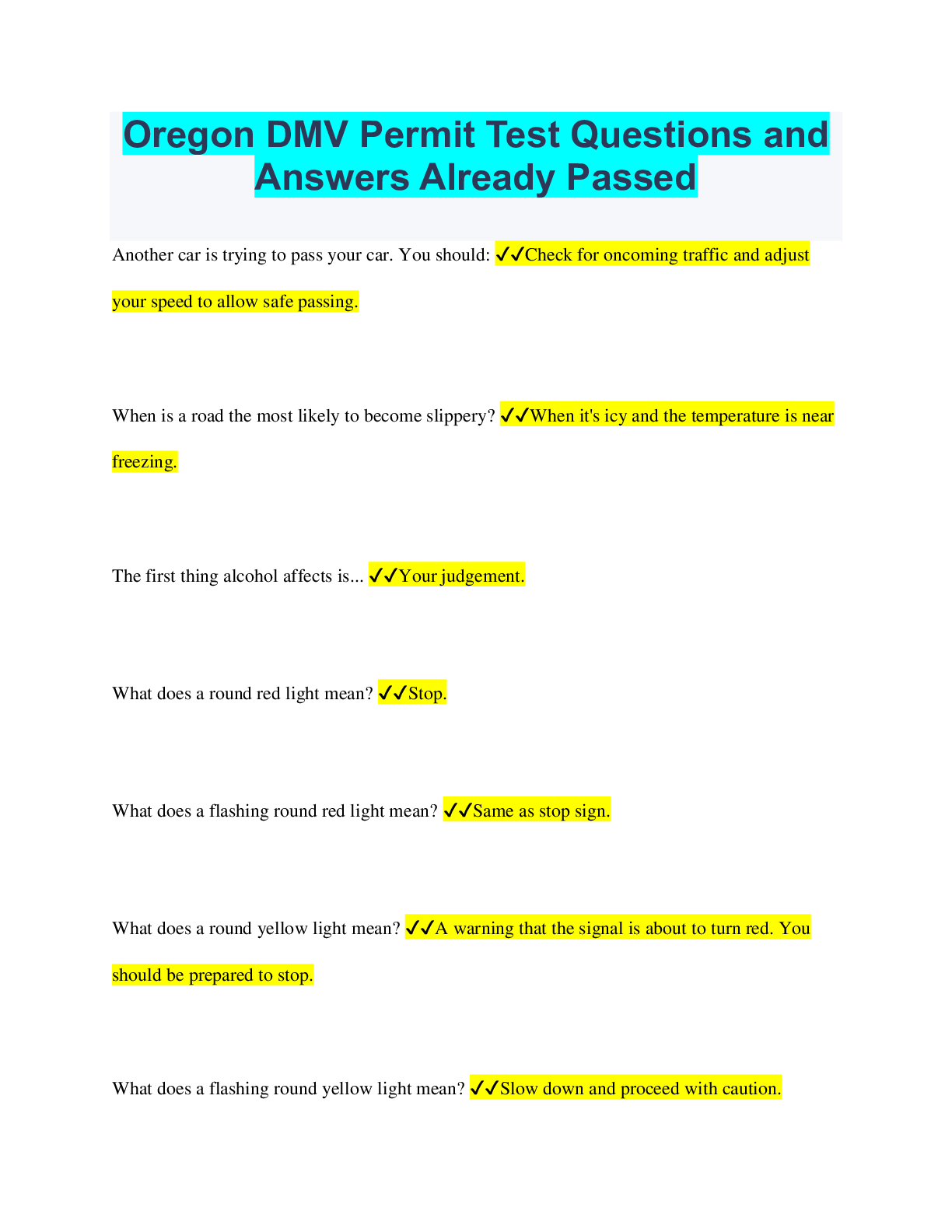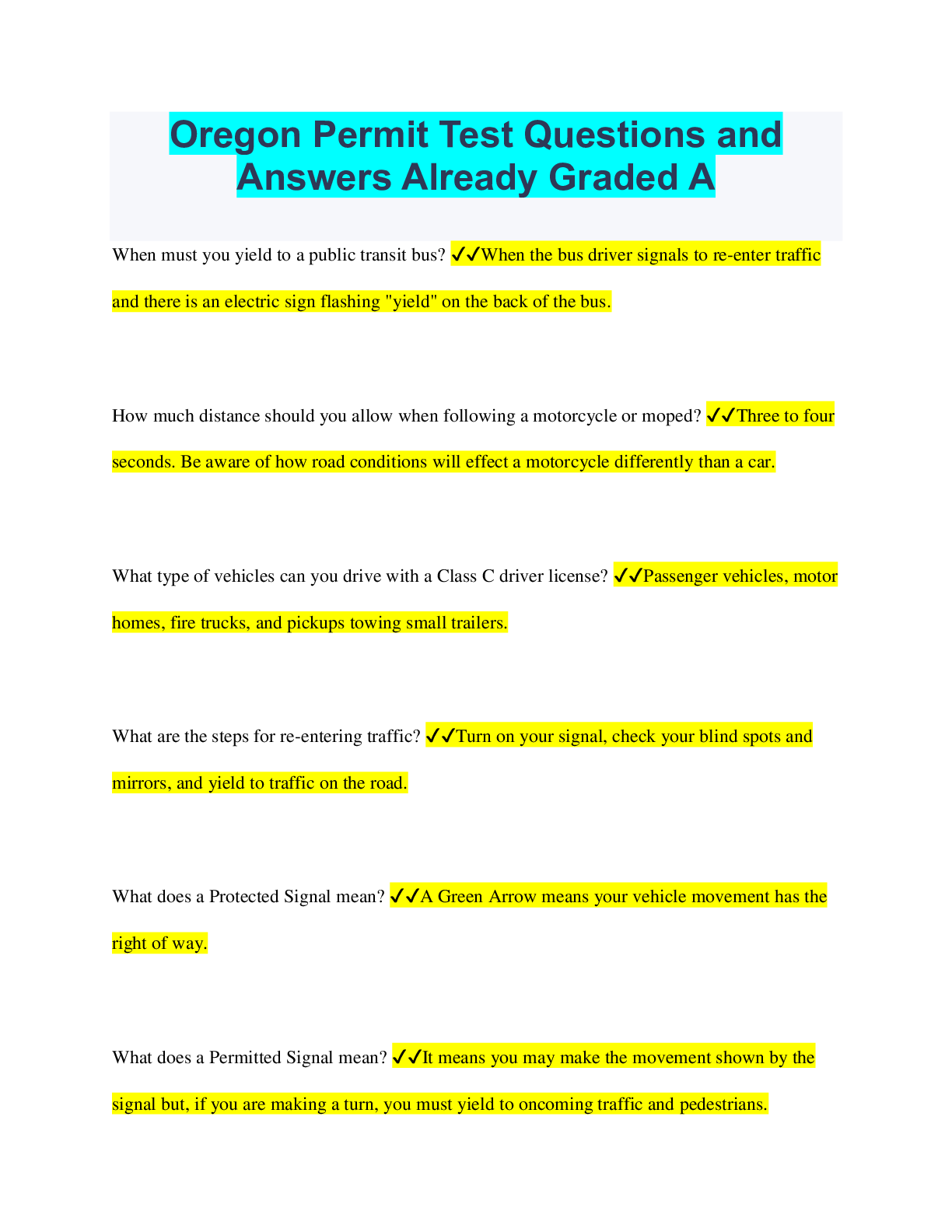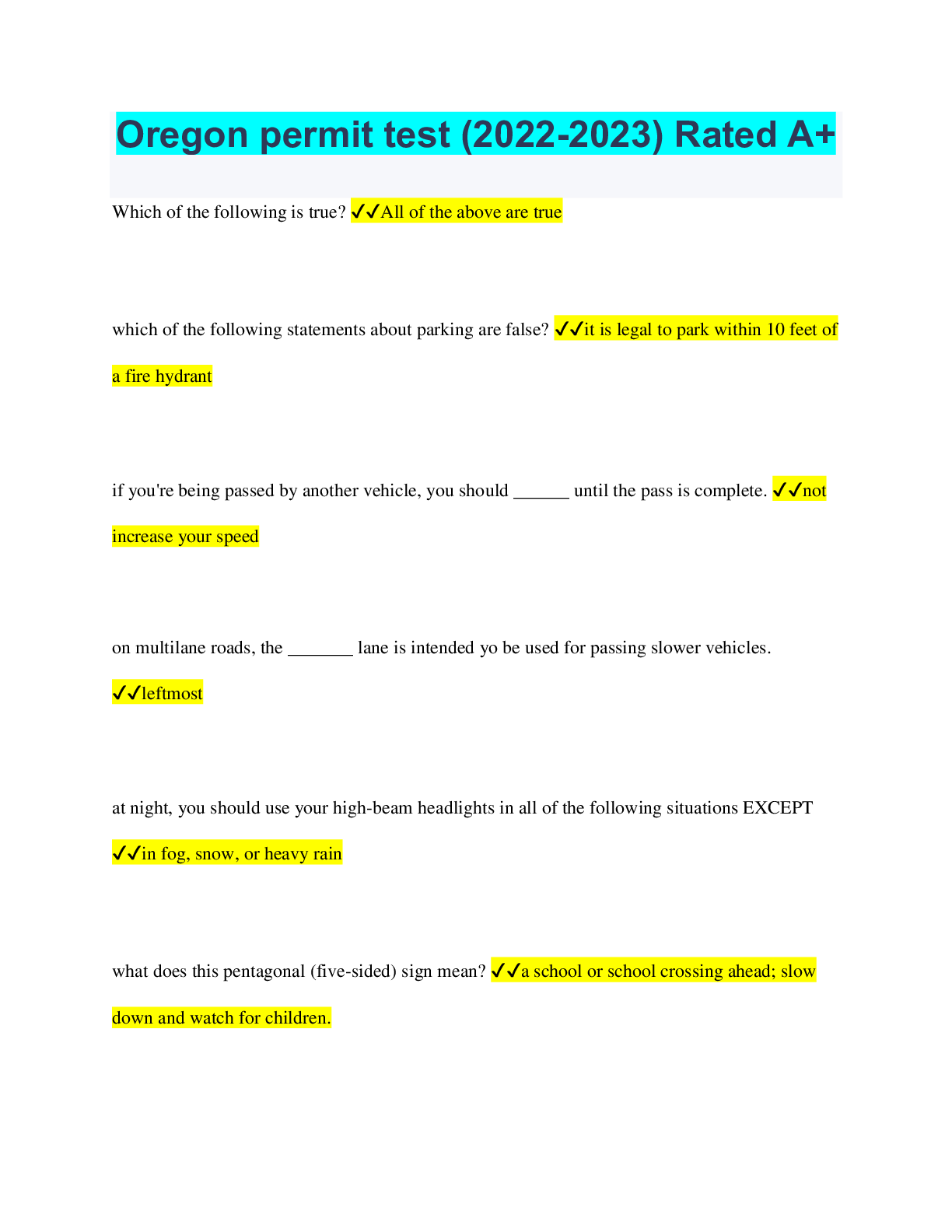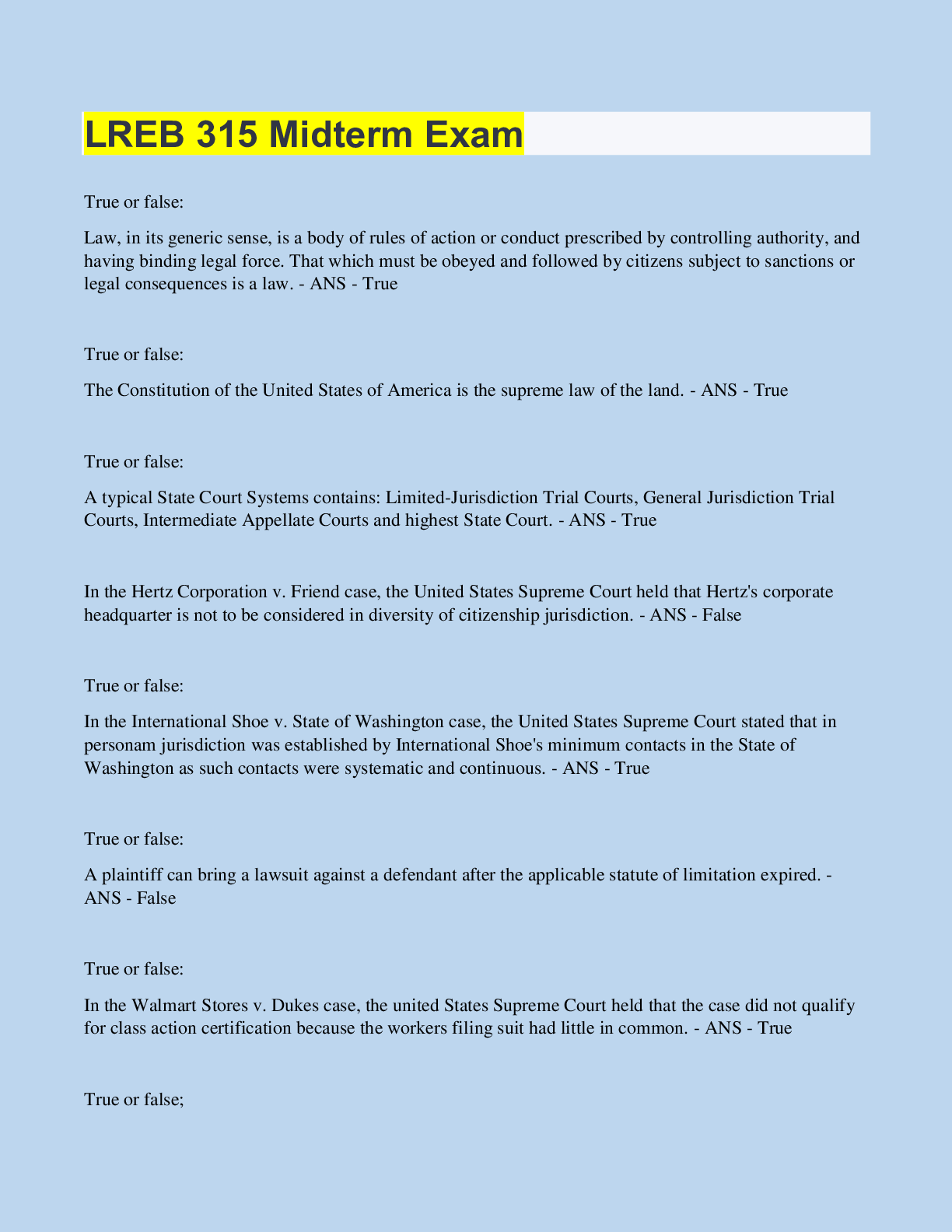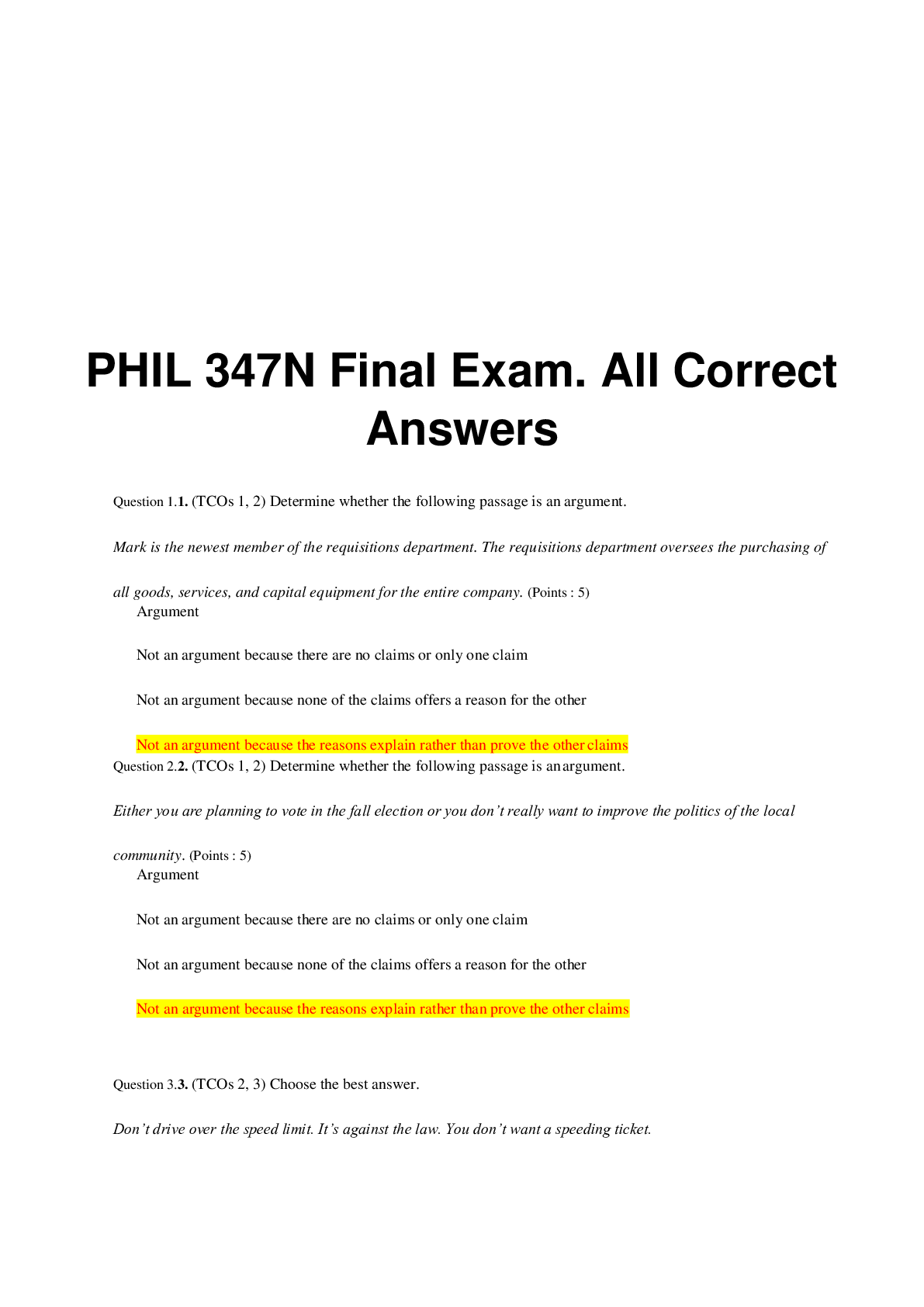Risk Management and Insurance > QUESTIONS & ANSWERS > YMCA Lifeguarding Test (All)
YMCA Lifeguarding Test
Document Content and Description Below
YMCA Lifeguarding Test What does the acronym PACA mean, and stand for? - ✔✔It represents the 4 steps in the decision-making process. The problem of the situation, the alternatives, the consequen... ces of the alternatives, and the final action or decision What is the Q-1-2 system? - ✔✔First asking a question, then a warning, then taking a break. (ask to leave the pool) What does the Q-1-2 system do for a lifeguard? - ✔✔Helps become consistent and fair, reduces stress and emotion of enforcing the rules, allows to be focused on your designated area. When enforcing the rules, what should you keep in mind? - ✔✔Be firm, fair, and tactful What are the safety check systems? - ✔✔Roll call, buddy system, safety swim/band test, swim breaks, tag board, and multilevel safety approach How many drownings a year are there? - ✔✔Roughly 3,600 What is the ratio for drowning children 14 and younger? - ✔✔1:4 How long does it take for a person to slip under the surface? - ✔✔It takes 20-60 seconds How long does it take an adult to struggle to stay above water? - ✔✔60 seconds When can a child perhaps fall below the surface of the water? - ✔✔20 seconds What is drowning? - ✔✔It is the process of experiencing respiratory impairment from submersion/immersion in liquid What is a distressed swimmer? - ✔✔Someone who is struggling to stay above the water Early warning signs of drowning - ✔✔A weak stroke, hair in the eyes, glassy eyes, two heads together, hand waving, moving toward a pier, erratic behavior, clinging to objects, neutral to negative buoyancy, inability to respond verbally Characteristics of drowning victims - ✔✔An inability to call for help & a panicked facial expression, head back and body low into the water, arms extended out from the sides and moving up and down ineffectively in an attempt to keep the face above the water, little to no support from the kick, an upright (verticle) position facing the nearest source of assistance Stages of drowning - ✔✔Initial Apnea, Dyspnea, Terminal Apnea, Cardiac Arrest Initial Apnea - ✔✔The temporary loss of breathing, or holding of the breath. Glottis is closed by reflex. Water in mouth and throat cuts off the air to the lungs: Oxygen to the brain decreases. How long is Initial Apnea? - ✔✔0-3 minutes, excellent chance for normal survival Dsypnea - ✔✔Difficult breathing, glottis being to partially relax. Body and head lower into the water; more water is swallowed. Water starts to fill the lungs, coughing and vomiting might occur. Victims become weaker from struggling and sinks lower into the water How long is Dsypnea? - ✔✔60-90 seconds Terminal Apnea - ✔✔Victim is unconscious and stops breathing. Water is persistent in the lungs, lack of oxygen to the brain may cause convulsions. Possible evacuation of the bladder and/or bowels. How long is Terminal Apnea? - ✔✔90 seconds- 3 minutes. Survival is likely but the longer the time period, the more probable it is that permanent neurological damage occurs. Cardiac Arrest - ✔✔Heart ceases to function and pump blood. Eyes dilate and skin turns blue. Without CPR, lack of oxygen will cause irreversible brain damage How long is cardiac arrest? - ✔✔after 5 min [Show More]
Last updated: 2 years ago
Preview 1 out of 9 pages
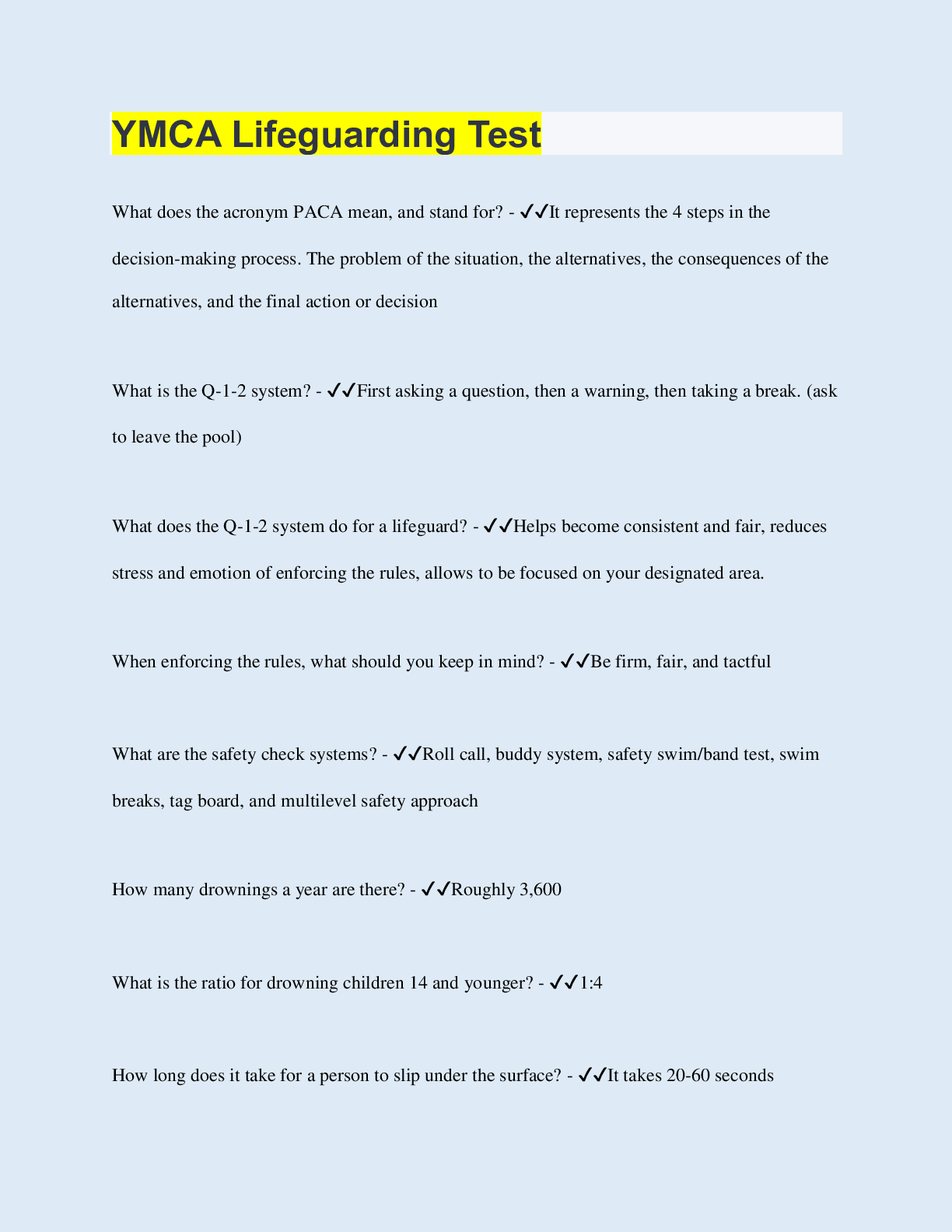
Buy this document to get the full access instantly
Instant Download Access after purchase
Buy NowInstant download
We Accept:

Reviews( 0 )
$10.00
Can't find what you want? Try our AI powered Search
Document information
Connected school, study & course
About the document
Uploaded On
Jan 29, 2023
Number of pages
9
Written in
Additional information
This document has been written for:
Uploaded
Jan 29, 2023
Downloads
0
Views
78

.png)


